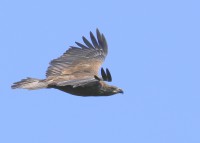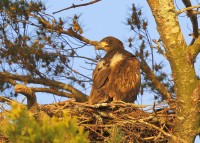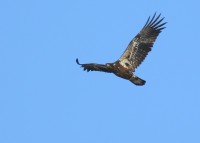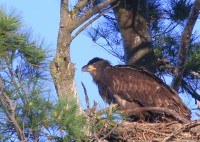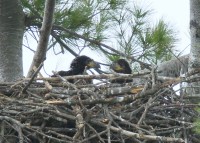2 Bald Eagle adults and 1 fledgling!
August 15, 2017 in Bald Eagle
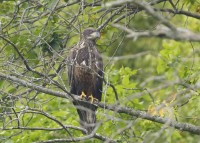 Had a nice chance to observe two adult Bald Eagles and a fledgling this morning, along the Merrimack River in Essex County. The fledgling leaped up into flight from rocks along the river bed. It then hopped from one perch to another and then remained in place for a while under overcast skies, light rain, winds from SW at 5MPH, high humidity, and temp just above 70F.
Had a nice chance to observe two adult Bald Eagles and a fledgling this morning, along the Merrimack River in Essex County. The fledgling leaped up into flight from rocks along the river bed. It then hopped from one perch to another and then remained in place for a while under overcast skies, light rain, winds from SW at 5MPH, high humidity, and temp just above 70F.
After leaving the nest, fledgling Bald Eagles are not very adept at catching fish. They pick up dead fish along shorelines first, and then progress to picking up dead fish floating in rivers and lakes. It may take months for a young fledgling to start catching its own live fish, and much longer for it to become reliable at fishing. So young eagles must spend more time fishing to catch the same number of fish as adults. For these fledglings, the first months in flight are a time of enormous learning and exploring the world around them.
This fledgling was one of 3 eaglets that hatched and fledged early in the second week of July. So this young Eagle has had about 5 weeks on the wing and will become less dependent on parents for food in weeks ahead.
